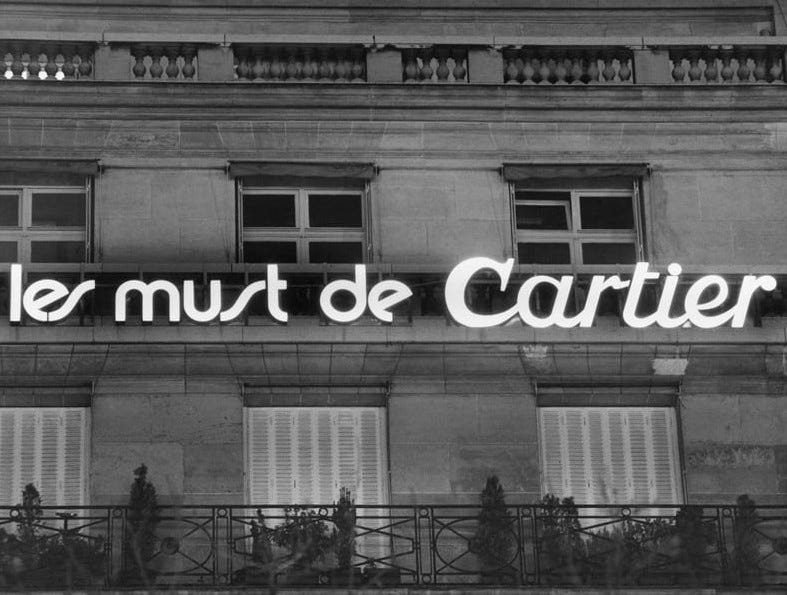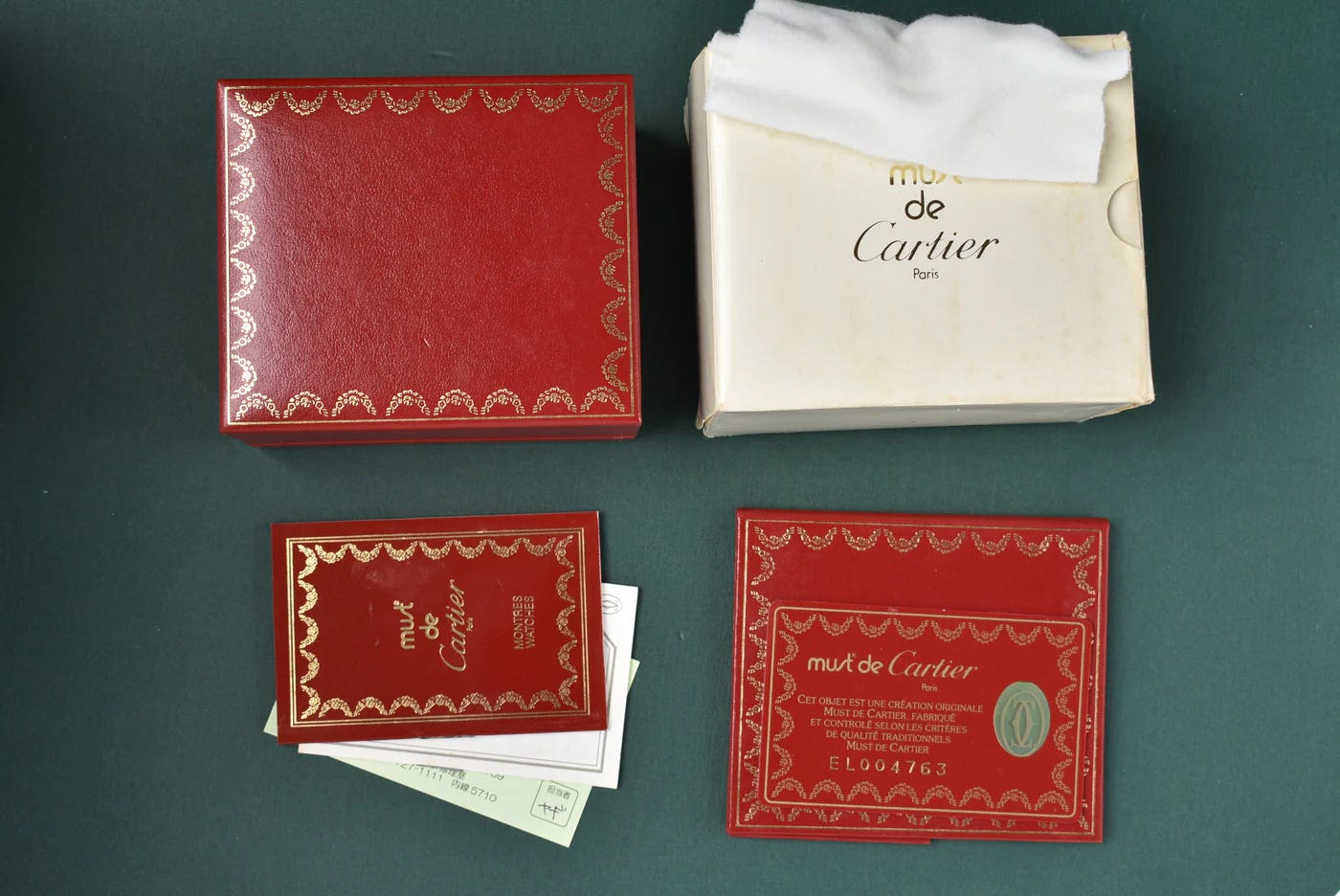Cartier’s catalog of influential designs are symbolic of their prolific history. The French jeweler’s path to mass market appeal began with a foundation predicated on niche, artisanal products. The ‘Must’ era of the late 20th Century arguably had the most influence in shaping the Cartier we know today.
In this article, we extrapolate a moment in Cartier history through an analysis of one of their most loved, and collected references.
An Accessible Tank
With a catalog so rich in icons, it’s difficult pinpointing one watch as Cartier’s ‘flagship’ piece. The Tank, however, is synonymous with the Cartier name. With a history that reflects the success of the brand itself, and a design perfected at inception, the Tank is hard to argue with.
The Tank’s design is beautifully minimalist, but never lacking. Its smaller dimensions carry a massive presence on wrist. It’s the type of piece that speaks directly to the collector’s pathos.
The price of the Tank is the biggest mountain to climb. Afterall, an aspect of its longevity is predicated on exclusivity. My idea is that this conjecture alone led to the inception of the ‘Must’ Tank.
The ‘Must de Cartier’ era had more than a few new references in the Cartier lineup. Just as Cartier is revered for their daring takes on classic design, the introduction of brightly colored dials, new metals, and industrial motifs were characterized by the brand’s adaptation to a shifting market.
The name of the line was coined by the company’s president at the time, Robert Hocq. It’s rumored that a member of his staff said “Cartier, it’s a must” and the phrase stuck.
In 1964, the Cartier family sold the different Cartier branches following the death of Pierre Cartier. Between 1972 and 1976, Cartier Paris, London, and New York were acquired by then brand president Robert Hocq and a group of investors. Under collective ownership, the purchase of all three Cartier locations ‘reunited’ the brand in a sense, forming a more modern Cartier Worldwide brand.
During this time of reorganization, the “Must de Cartier” line was introduced. It aimed to provide a more accessible Cartier product while simultaneously altering brand perception ever so slightly. Cartier, once the ‘king of jewelers, jeweler for kings’ was now offering plated timepieces, and better yet, steel watches.
- Our article “One of the Fastest Growing Markets Right Now”
An advertisement at the Cartier Paris flagship circa 1970s
The introduction of a more affordable Tank was done in response to the Quartz Crisis. The Must era showed how the brand responds to both mass consumerism, and adversity in the market. Their timepiece offerings prior to 1970 were not easily attainable, and their brand image shifted radically in only a few decades. This, however, shouldn’t carry any negative connotations - it’s an integral part of Cartier’s evolution.
Class, and Character
The solid gold Santos Carrée isn’t the only ostentatious creation to come out of the Must era. Today, let’s consider the Tank.
With seemingly endless iterations, the Must Tanks remain a staple for many vintage collectors. From patterned dials, to those with a deep Bordeaux tone, these Tanks revolutionized what Cartier luxury meant through their vermeil construction. A silver body coated in gold, and dials to contrast the traditional Roman opaline predecessors, examples in good condition are fun nonetheless.
The overall design of the Must Tanks are based on the Tank Louis. Released in 1977, they housed both ETA-based quartz and mechanical movements. These ETA alternatives were much cheaper than movements like Frédéric Piguet calibers used in their other timepieces (and are much easier to service).
Still, we have the classic blue cabochon crown - a keystone of Cartier design.
You’ll notice that the casebacks of these watches often have more inscriptions than pre-1970 Cartier timepieces. Consider the extra hallmarks, movement designation, and inclusion of “Swiss Made.” Examples where this text is more pronounced allow the collector to accurately gauge how hard a particular example has been worn.
Along with the Must Tanks came packaging and documentation to rival most at their price point. Notice how proudly the ‘Must de Cartier’ text adorns these extras:
The cult-like collector base that surrounds these pieces is fueled in part by the value in a Must Tank, and its ability to be found in nearly any configuration. With the dial specifically, collectors can opt for a lacquered color, traditional Roman, or even quite avant-garde dial layouts.
Consider Tyler, The Creator’s Must Tank. An artist known for his taste in Cartier, the Must Tank in his collection features a radial, Arabic numeral layout - a design exclusive to the Must Tank.
Credit: Robb Report
Modern Influence
The classic monochrome Tanks were recently reintroduced in 2021, and pay homage to the classics of the ‘80s through colorways that collectors are sure to recognize. This time in steel (and with contemporary construction), some describe the lineup as a modern Must.
And still, this classic take on the Must serves the same purpose - to introduce the Cartier Tank to a new market of buyers. Perhaps the solid gold Louis is beyond your price range, but the steel Must is right in that sweet spot.
Even with these modern options, I still opt for the vintage originals. There’s a degree of sabi that’s difficult to replicate through today’s releases.
A 1980s original with quite the patina / Credit: Christies
Overall, the Must Tank represents a unique, and influential history of Cartier. Created out of a shifting market, the line was successful in its purpose, and leaves us with affordable vintage gems packed with value. Even today, we recognize how this 1970s initiative continues to shape the modern Cartier brand, and market.









Love the blog brother..Saw about this in Huntington company channel ✨